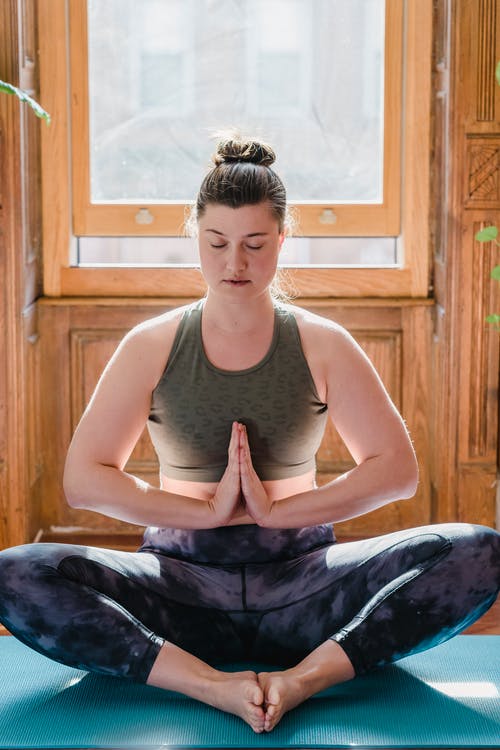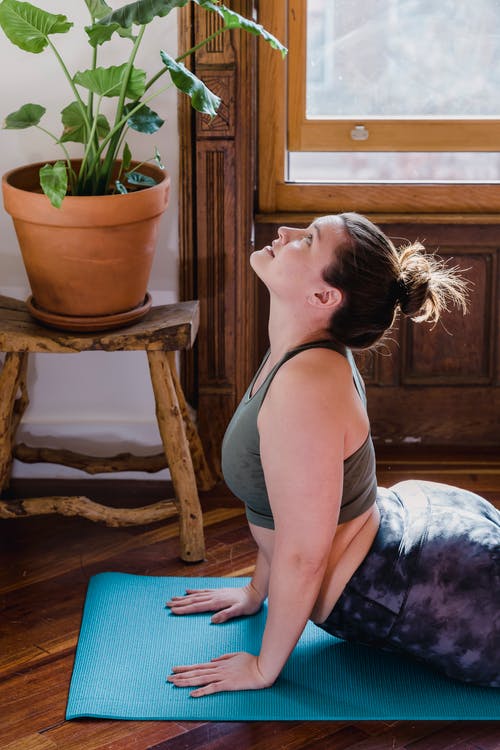Benefits Of Yoga – Many people aren’t aware of the numerous benefits of yoga. Among them are lower blood pressure and stress, improved circulation, and reduced risk of diabetes and heart disease. However, you probably don’t know how easy yoga can be to practice. If you’re still not convinced, then read on to learn about the health benefits of yoga and how it can improve your life.
Listed below are just a few of the many benefits of yoga.
Reduces stress

Yoga is often praised for its stress-reducing benefits, and it’s true that the exercise improves physical and mental health, including decreasing irritability and increasing feelings of relaxation. It also regulates the stress response in the body, triggering physiological changes that make you feel more calm and at peace. This practice has been shown to reduce stress, improve mood, and improve the immune system. The physical benefits of yoga also include improving range of motion and strength. Reduce risk of ED by taking Fildena.
Research has shown that regular yoga practice lowers the levels of daytime stress hormones and increases heart rate variability, which measures the body’s ability to tolerate stress. The research on yoga demonstrates that just a few sessions can decrease daytime stress hormones and increase heart rate variability, which is a good measure of how well the body can tolerate stress. This connection between body and mind has been shown to improve after a few sessions. Additionally, yoga helps you connect with your body and reduce stress levels by reducing heart rate, blood pressure, and respiratory rate.
The benefits of yoga are numerous. As mentioned earlier, it helps to control the sympathetic nervous system, which acts like the gas pedal in the body. Through deep belly breathing, yoga lowers cortisol levels and supplies the brain with enough oxygen. As a result, you will feel calmer and better able to solve problems. The stress-reducing effects of yoga are also well known, including its ability to make you feel more productive.
Lowers blood pressure

A growing number of Americans are exploring the benefits of yoga, an ancient practice that incorporates controlled breathing and postures. Although there is no universal definition of yoga, practitioners generally describe it as a mind-body practice originating in ancient India. The practice incorporates breathing techniques, meditation, and specific ethical practices. The practice has increased in popularity in the United States, with an estimated 15.8 million practitioners. Health care providers are also increasingly suggesting the practice.
While yoga may help lower blood pressure, it should never replace medication. While it may moderately lower blood pressure, it could lead to heart problems, chronic kidney disease, or a stroke. Certain medical conditions may be exacerbated by yoga. However, many studies have found that yoga is not harmful in patients with high blood pressure, as long as they practice under the guidance of a trained professional. Yoga can only be beneficial for people with certain conditions, so it’s important to talk to your health care provider before starting any new exercise routine.
One study conducted by Stacy Hunter, a health researcher, suggested that hot yoga is effective in reducing blood pressure. It should be emphasized that yoga involves breathing techniques and meditation. A patient should start yoga early in order to maximize its benefits. Once blood pressure is high, however, it is important to stick with medication. Further research may be needed to confirm the benefits of yoga. There are several ways to lower blood pressure using yoga.
Improves circulation

Regular yoga practice is a great way to improve circulation, especially for people who have poor blood flow. A good circulation improves muscle strength and energy, which are important aspects of an ergonomic work environment. Yoga is also beneficial for relieving stress and increasing blood flow. This article provides an overview of some basic yoga poses, with instructions from local Vancouver yoga instructors. All information is provided for informational purposes only. Consult your physician for specific advice.
One of the most basic exercises for circulation is the leg-up-the-wall pose. This poses improve circulation in the upper body by relaxing the sympathetic nervous system and stimulating circulation. It also increases circulation to the brain and improves overall energy. Other poses improve circulation in the upper body, including headstands. The goal is to increase circulation throughout the entire body. The increased flow of blood helps people with poor circulation perform better in physical and mental tasks. Fildena 100 helps in physical health.
Legs-up-the-wall pose is another excellent exercise for improving circulation. This inversion forces blood flow towards the head. If you are not able to do this pose properly, practice it against a wall. Try this exercise until you find a pose that feels comfortable for you. Aside from the leg-up-the-wall exercise, yoga poses such as crow’s feet pose, headstand pose, and pigeon pose can also improve circulation.
Reduces risk of diabetes

Studies have shown that regular yoga practice can reduce the risk of developing diabetes, particularly in high-risk individuals. Moreover, regular practice of yoga improves symptoms in individuals with diabetes and reduces the need for anti-diabetic drugs. In addition, yoga therapy helps to reduce body weight and improve lipid profiles and skin fold thickness. Nonetheless, more research is needed to determine whether or not yoga actually helps reduce the risk of diabetes.
The evidence to support the claims made in this study is mixed. One study cited that yoga may reduce fasting glucose. Another study concluded that yoga also reduced postprandial glucose, the amount of glucose in the blood after eating. It also reduced glycosylated hemoglobin, the part of hemoglobin that has glucose attached to it. Similarly, yoga may improve insulin receptor expression and glucose uptake. However, these studies were not large enough to draw definitive conclusions.
Several studies have found that regular yoga practice improves glucose levels and glucose control. Among these, two meta-analyses cited that yoga helps control both type 1 and type 2 diabetes. There were also positive changes in free blood glucose, total cholesterol, and BMI. Moreover, several other studies have also shown that yoga has a beneficial effect on triglycerides, low-density lipoproteins, and systomortary blood pressure.
Improves digestion

Practicing yoga is known to help improve digestion. The digestive system is responsible for breaking down food into fuel and excreting waste. It consists of the mouth, esophagus, stomach, pancreas, liver, gallbladder, and small and large intestines. Practicing yoga helps strengthen these organs and encourages them to produce more digestive enzymes. However, yoga is not recommended for people who are already suffering from digestive problems, so be sure to consult a doctor before beginning any exercise program.
In addition to boosting digestive health, Yoga has many other benefits. Yoga postures increase flexibility, muscle strength, and circulatory health. Gentle yoga poses relax the gut and encourage deeper breathing. It has a powerful detoxifying effect. In addition to easing digestive discomfort, yoga postures stimulate the liver, encourage the movement of intestines, and improve digestion. While a good diet and exercise program are important, a healthy digestive system is also crucial to overall health.
Another effective pose that promotes better digestion is the downward facing dog, or downward-facing-dog. This pose is a staple of most traditional yoga classes. It only takes a few breaths to achieve multiple benefits. Begin in plank position, then straighten your arms. The downward facing dog position is designed to massage your intestines while reducing stress. In addition, it is beneficial for people with IBS who experience gas, bloating, diarrhea, and constipation. One study compared 208 patients with IBS to those who practiced a low-FODMAP diet and yoga for 12 weeks. Both groups reported an improvement in symptoms.
Reduces aches and pains

There is growing evidence that yoga reduces aches and pains. This form of exercise focuses on breath control, stimulating chakras, glandular regulation, and developing presence. As more people discover the benefits of yoga, classes are now held in community centers, schools, and studios. There are also online yoga courses for those who prefer to do their exercises in the privacy of their own home. Yoga is quickly becoming the most popular exercise regimen for people seeking to manage pain.
When used correctly, yoga can reduce aches and pains in the lower back. The practice of yoga helps people stretch their hip flexors and rotators, two of the most commonly affected muscle groups in the lower back. By allowing blood to flow freely and deeply into the hip flexors, yoga can reduce the stress and pain in lower back muscles. Moreover, regular yoga classes help people improve their posture.
In addition to reducing aches and pains, yoga can improve the mood of patients with chronic pain. It has been found that the practice of yoga improves a patient’s mood and reduces stress. For this reason, the practice of yoga is recommended by doctors. The first step in practicing yoga is taking a deep breath. Deep breathing can help calm the nervous system and increase energy levels. And breathing deeply can help you focus on other things, such as your body’s natural healing processes.
Increases flexibility

Performing the proper poses can increase flexibility and range of motion. Yoga helps you strengthen muscles and joints and can relieve stress. Many yoga poses start on hands and knees and involve raising the hips towards the sky. The next step is to externally rotate the shoulders and draw them back. While doing this, remember to keep a micro bend in your knees. The benefits of yoga go beyond its physical benefits. Here are some of the most common poses and their benefits.
The best way to improve your flexibility is to do the stretches regularly. You will see noticeable changes in two to four weeks if you practice them five days a week. If you’re new to stretching, it can be helpful to try a few poses first before moving on to more difficult poses. Eventually, you should practice a wide variety of stretches daily. While you’re doing these stretches, you’ll notice a burning sensation throughout your body.
While some people focus on strength training and cardio workouts, they neglect the importance of flexibility in physical fitness. Flexibility improves range of motion and reduces stress on joints. Stretching helps you relieve stress because it releases tension. When physical tension is relieved, mental tension is relieved, too. Moreover, yoga poses help alleviate insomnia and improve your overall well-being. Yoga helps you achieve this by building strength and flexibility.
- Sports Betting Website Development – Analytics and Insights - July 13, 2024
- Why Regular best automobile detailing services Is a Must for Car Owners - May 15, 2024
- Catalog Printing – Businesses Have Just Got Better with Wholesale - October 5, 2023



Post Your Thoughts